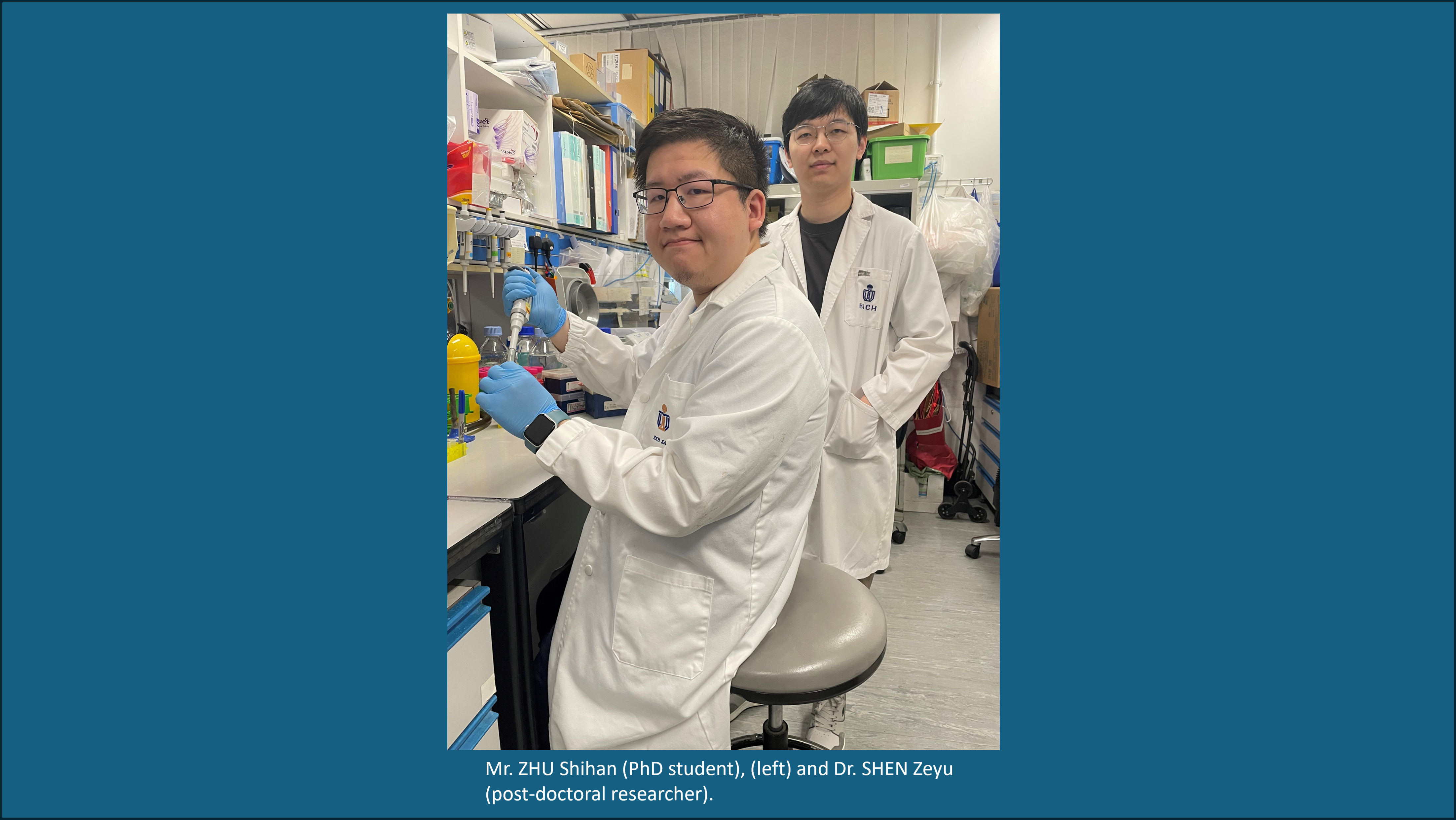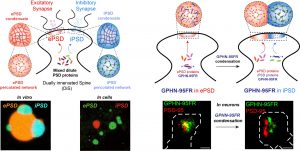
A research team from the Division of Life Science, (HKUST), led by Mr. ZHU Shihan (PhD student) and Dr. SHEN Zeyu (post-doctoral researcher), with the guidance of Prof. ZHANG Mingjie, former Chair Professor in Life Science at HKUST have recently published a paper in the prestigious journal Science. In this study, the researchers wanted to understand how excitatory and inhibitory neuronal synapses, especially the post-synaptic densities (ePSDs and iPSDs, respectively), inside living cells stay separate from each other. These synapses are like small compartments within cells and are crucial for communication between brain cells.
They used biochemical reconstitutions in vitro and in cells and found that these PSDs form distinct groups of molecules through a process called phase separation, similar to how oil and water separate into layers. The molecules within the excitatory postsynapse group stick together, as do the molecules within the inhibitory postsynapse group. Importantly, these groups do not mix with each other.
What’s particularly intriguing is that the researchers attempted to mix the molecules from the two synapse groups but were unable to do so. This suggests that the molecules naturally have a tendency to remain separate while undergoing phase separation. This finding indicates that the separation of molecules within these synapses is a normal process that occurs naturally.
Understanding how these synapses stay separate is important because it helps us understand the function of the brain. Maintaining a balance between excitatory and inhibitory signals is crucial for proper brain function. If these signals were to mix, it could disrupt the normal operation of brain cells.
This research also has broader implications for understanding how different structures within cells can remain separate. Many structures in cells lack surrounding membranes, yet they manage to maintain their distinct compartments. By studying these synapses, scientists have uncovered a fundamental principle that can aid our understanding of how other structures in cells remain separate.
This study deepens our understanding of the brain and may potentially contribute to the development of new strategies for targeting specific molecules or networks within cells for medical purposes.

Publication Reference:
Zhu S, Shen Z, Wu X, Han W, Jia B, Lu W, Zhang M. Demixing is a default process for biological condensates formed via phase separation. Science 384(6698):920-928. (2024) https://doi.org/10.1126/science.adj7066.